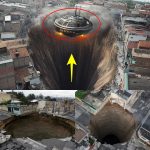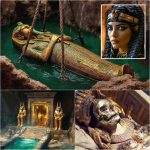BREAKING DISCOVERY: A Massive Anubis Statue Unearthed in the Mongolian Steppe
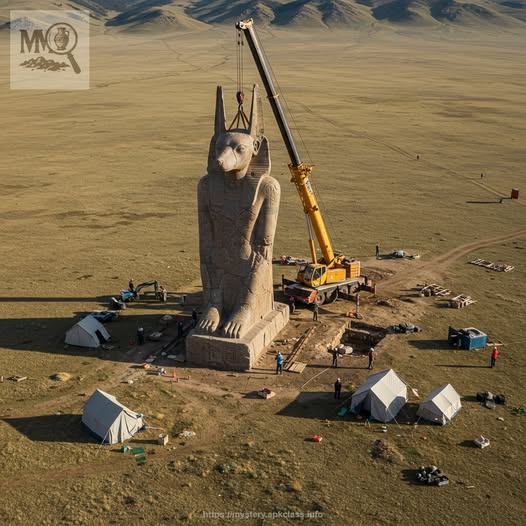
BREAKING DISCOVERY: A Massive Anubis Statue Unearthed in the Mongolian Steppe
In a groundbreaking archaeological revelation, a colossal stone statue depicting Anubis, the ancient Egyptian god of the afterlife, has been uncovered in the windswept plains of central Mongolia. The monument, carved from solid basalt and towering over 10 meters in height, bears astonishingly detailed hieroglyphs and sculptural precision that have left experts around the world perplexed. Preliminary analysis suggests the statue predates any known cultural contact between ancient Egypt and the East Asian steppes, challenging centuries of established history.
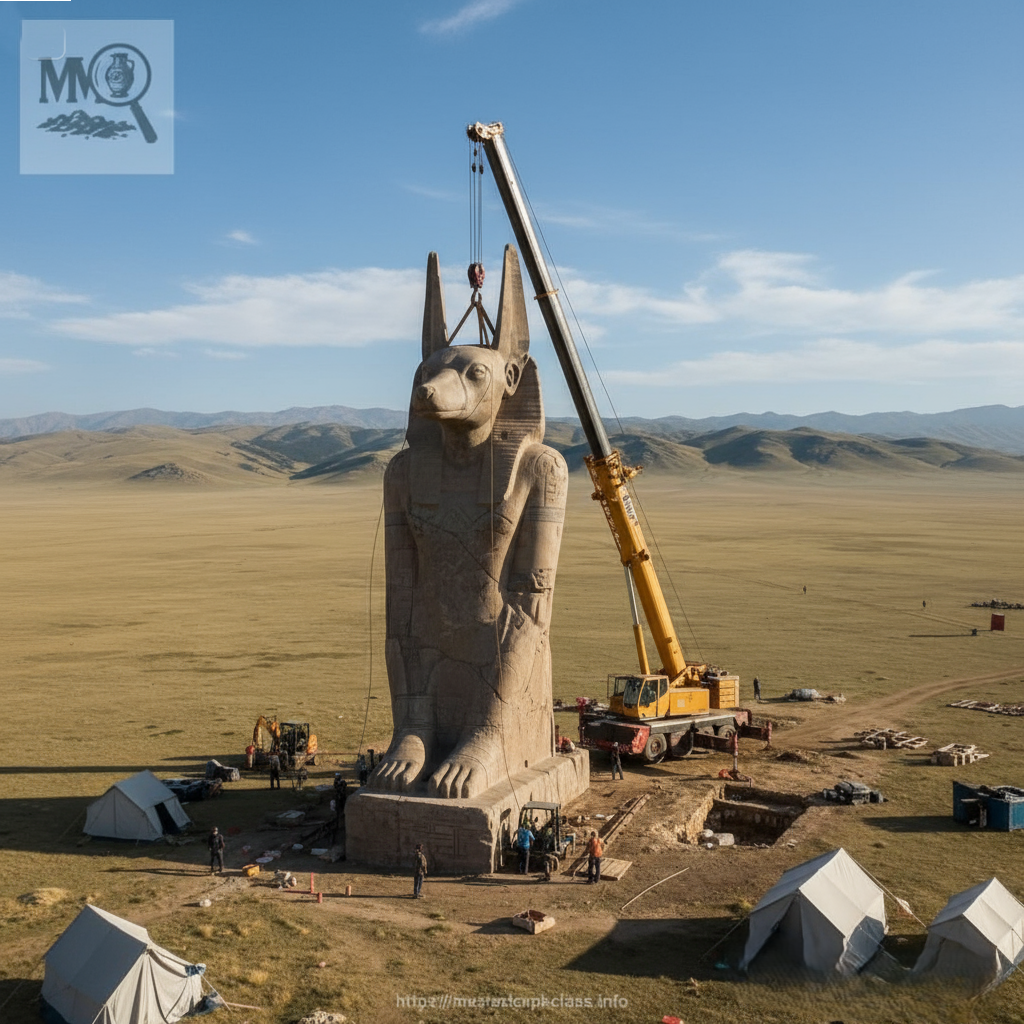
A Monument Out of Place
The discovery was made by a joint Mongolian-European excavation team while conducting a survey near the Khangai Mountains — an area previously known only for Bronze Age nomadic artifacts. Instead, buried beneath layers of compacted earth and stone, they found what appears to be a meticulously preserved statue of Anubis standing guard over a subterranean chamber. The inscriptions at its base are written in classical Egyptian hieroglyphics, referencing phrases such as “the gate of the underworld” and “the passage of the black jackal.”
Experts are now grappling with one burning question: how could an Egyptian deity find its way to Mongolia, thousands of kilometers from the Nile Delta? Some mainstream historians propose the possibility of ancient trade routes or cultural diffusion far earlier than previously documented. However, fringe theorists and independent researchers argue this could point to evidence of a forgotten transcontinental civilization—perhaps one that existed before the last great flood, linking distant lands under a single global culture.
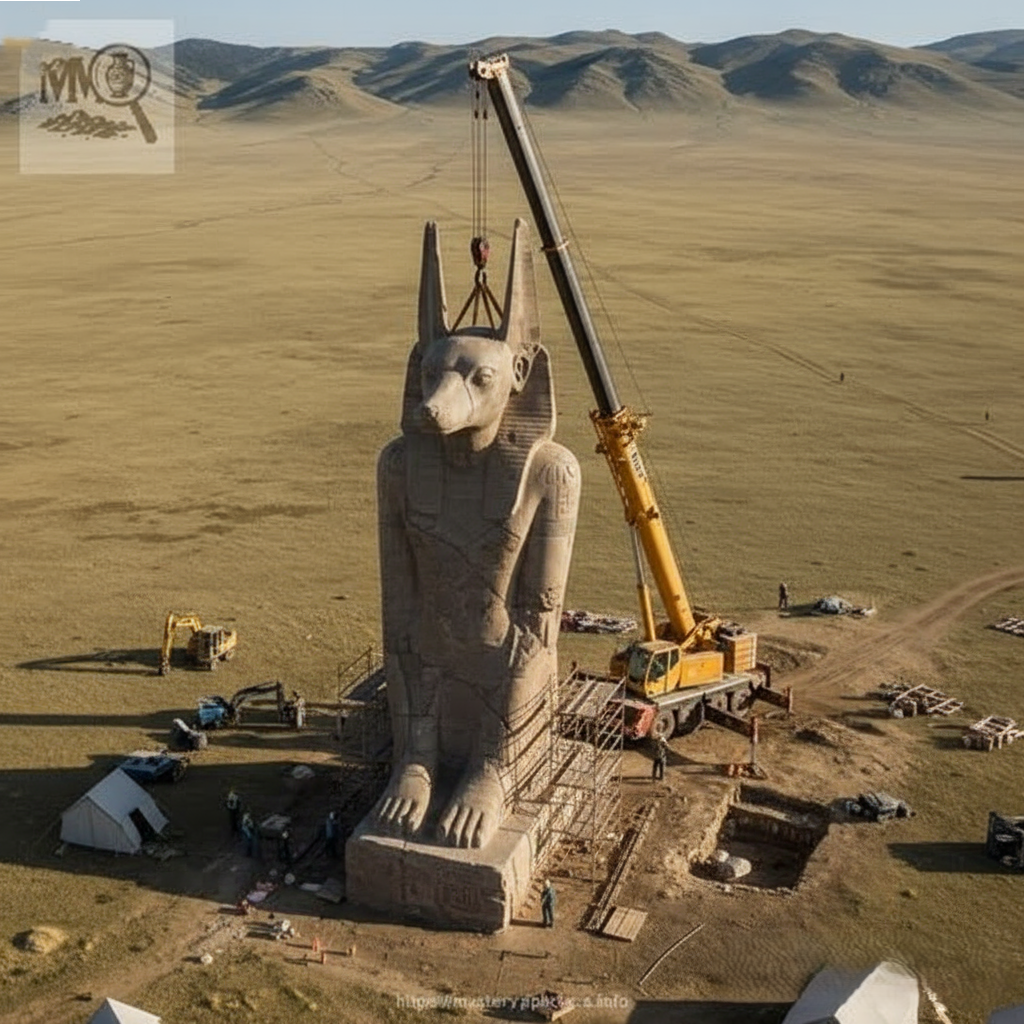
Mysteries Beneath the Steppe
Ground-penetrating radar scans have revealed a vast network of chambers extending beneath the statue, suggesting it may mark the entrance to an ancient necropolis or ritual complex. Excavation efforts are proceeding cautiously, as local authorities have cordoned off the area amid rumors of unexplained electromagnetic disturbances and rapid erosion of nearby soil layers. Teams from Egypt’s Supreme Council of Antiquities have reportedly joined the mission to verify the statue’s authenticity and decode its carvings, which include unfamiliar symbols unseen in traditional Egyptian contexts.
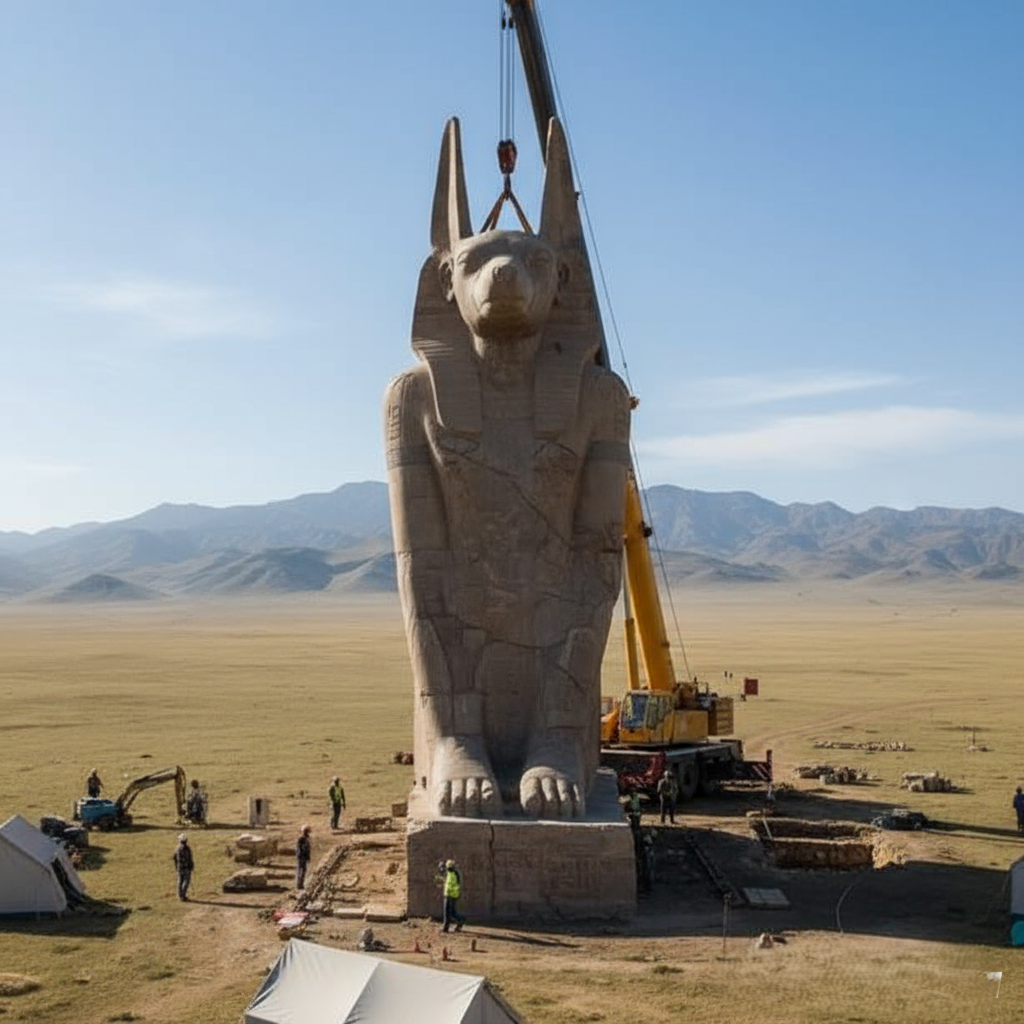
As cranes lift sections of the monument for laboratory study, the world watches closely. Could this discovery rewrite our understanding of early human civilization? Could it indicate contact between ancient Egypt and regions of Inner Asia long before written history began? For now, scientists remain divided — but one thing is certain: the past is far more interconnected and mysterious than we ever imagined.
#AncientMystery #LostCivilization


